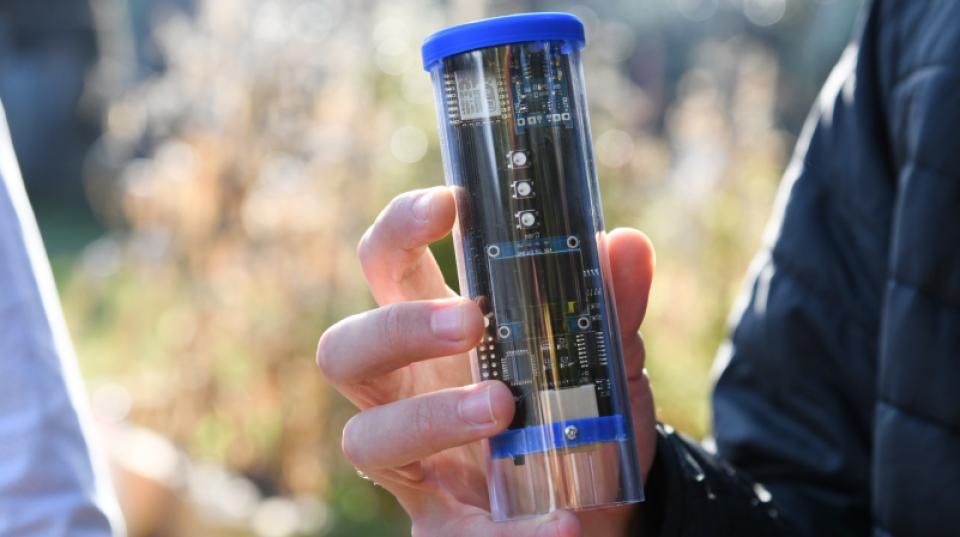Overview
This project aimed to develop and accelerate the adoption of conservation agriculture for selected soils, crops and cropping systems in Bangladesh, especially in rain fed areas and those with supplementary irrigation, so that farmers and households can benefit from cost saving crop production technologies and sustainable resource management.
Bangladesh has to increase food security for its growing population and improve land use sustainability-while boosting farm profitability by decreasing costs of crop production.
The nation-wide spread of two-wheel tractors and the development of versatile multi-crop planters, which can sow many crops, provide a platform for implementing conservation agriculture, which decreases crop production costs and improves the fertility of soils while maintaining or improving yield. Systematic work is now needed on the implications of adopting conservation agriculture in rice-based systems and on accelerating adoption of planters for crop establishment on farms.
Outcomes
The project made significant contributions for the development of capacity in key aspects of CA research (weed control, machinery development, soil fertility, cropping systems). The project offered 8 PhD scholarships (target was 4) [including 4 John Allwright Fellowships] for BARI and BRRI scientists and 22 MS (target was 7) fellowships. Four PhD and 22 MS Fellows already submitted their thesis; and 2 PhD Fellows have been awarded; 1 submitted in September, 2017; and the other will submit within November, 2017. The project supported a total of 126 scientists, university professors, extension officers, and private sector personnel to attend short-term training, seminar, meetings, conferences at home and abroad to publicise the project outcomes. Furthermore, the project scientists had given more than 20 seminars in Argentina, Bangladesh, Cuba, India, Nepal, Australia, Zambia, Vietnam, Malaysia, Vietnam, Philippines, China, etc. on CA in Bangladesh.
Soil puddling for transplanting rice seedlings is the limiting factor for the adoption of CA in rice-based cropping systems. The project has developed novel strip-tilled non-puddled rice transplanting in minimally-disturbed soil. Grain yield increases (by up to 12 %) were recorded with the longer-term practice of non-puddled rice together with strip planting of other crops in the rotation, while yield loss was reported rarely found relative to puddled rice. The land preparation cost was reduced significantly by non-puddled rice establishment. More than 3,000 farmers have practiced the non-puddled rice establishment in project working districts.
The effects of CA on soil properties and crop production in rice-based cropping systems in Bangladesh were assessed at six long term experiments. The first two experiments were started by Md. Ariful Islam in 2009 and are now growing crop 23. After 2.5 years in both legume- and cereal-dominated rotations, the soil organic carbon (SOC) concentration, SOC stocks and labile carbon (C) fraction at 0-7.5 cm soil depth were greater in strip planting (SP) than conventional tillage (CT). By contrast, the SOC concentration and storage, and water soluble carbon (WSC) increased at 7.5-15 cm soil depth in bed planting (BP) compared to CT and SP.
In summary, CA is being adopted in areas where there have been repeated demonstrations of the technology on farmers fields, and there are trained LSP willing to sow CA crops with the reliable VMP. In three Blocks, CA planting reached 10-16 % of all Rabi season crops in 2016-17. A substantial body of research has demonstrated the benefits of CA and mechanised planting for cost savings, yield increases in many cases, increased profit in most cases and substantial labour saving. Improvement in soil quality has been demonstrated in long term experiments together with reduced GHG emissions. Those farmers who adopted CA have achieved substantial yield increases with wheat, mustard and lentil. For all of those crops, as well as maize, profit increased substantially with CA practices.
Based on the potential yield increases and costs savings to farmers, adoption of CA and the VMP planting services by only 2.5 % of all farmers in Bangladesh could directly generate an additional $ 25-45 million per year of value to farmers.




